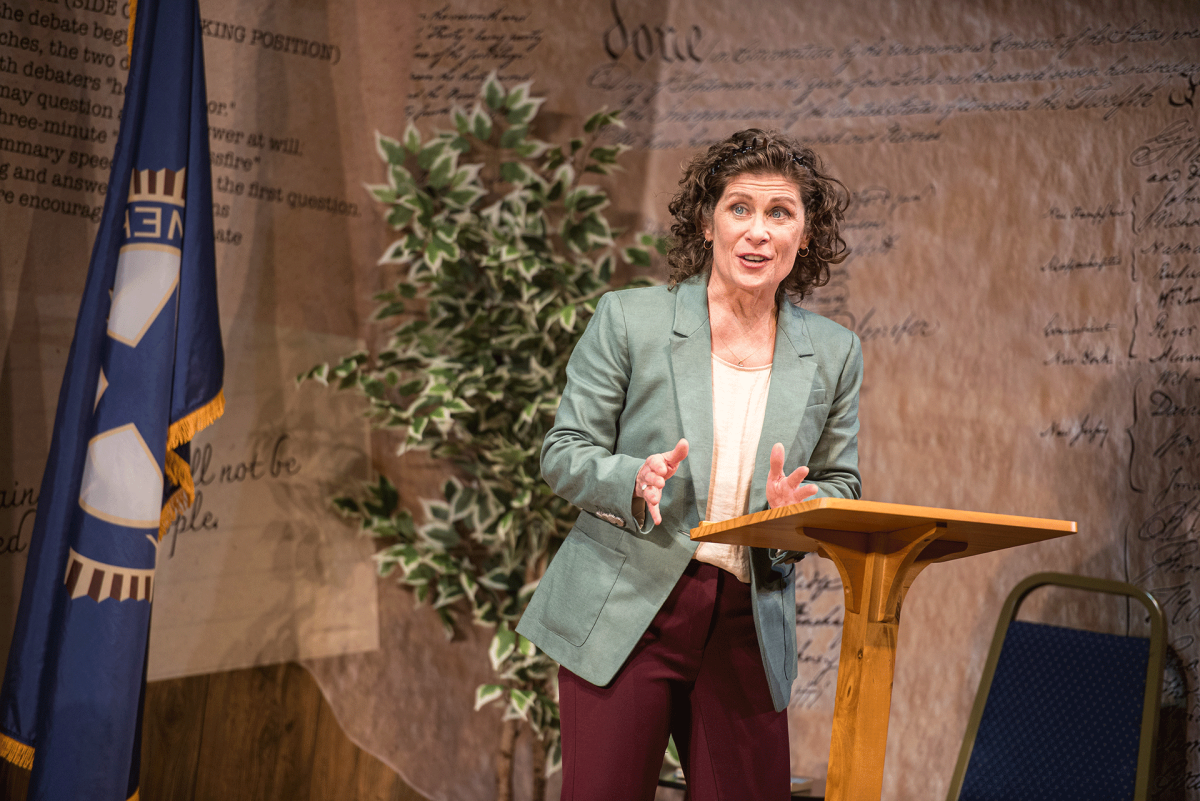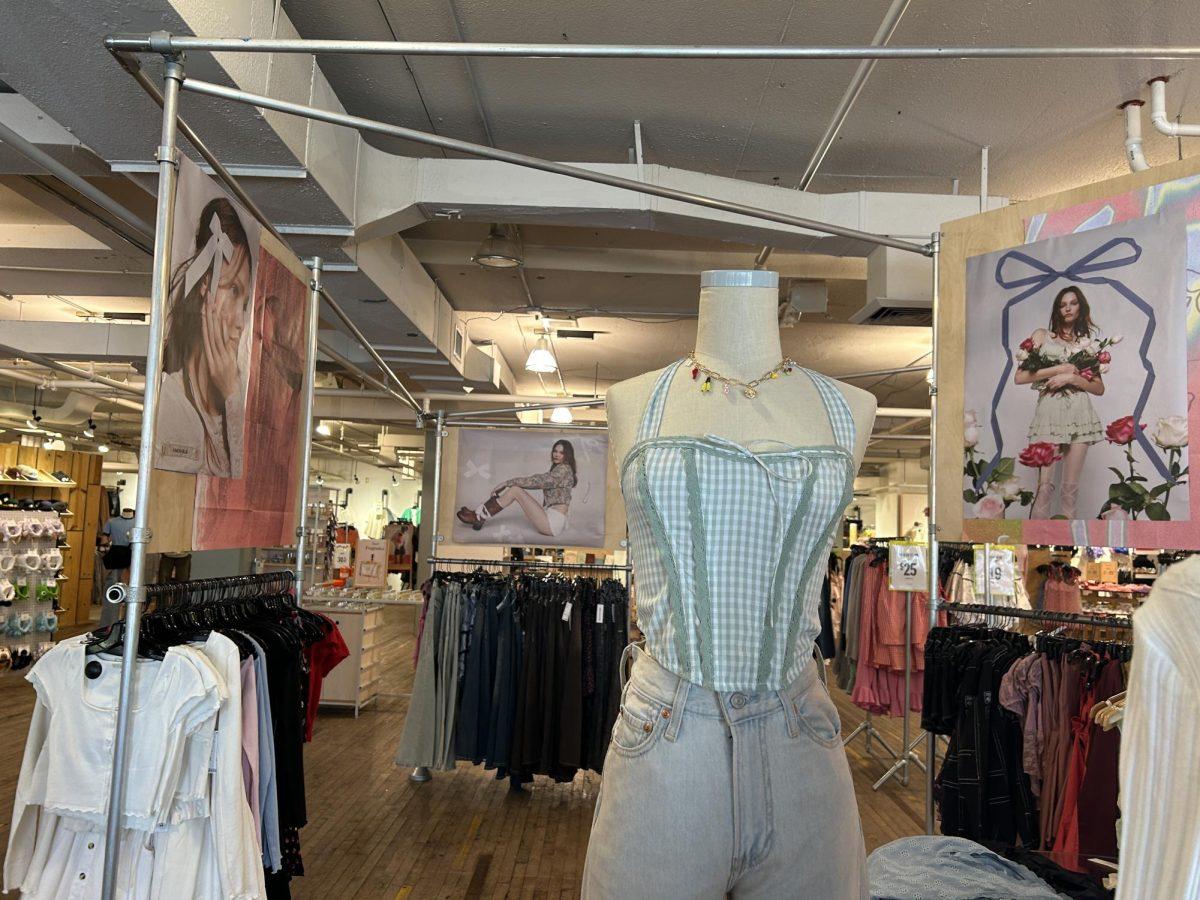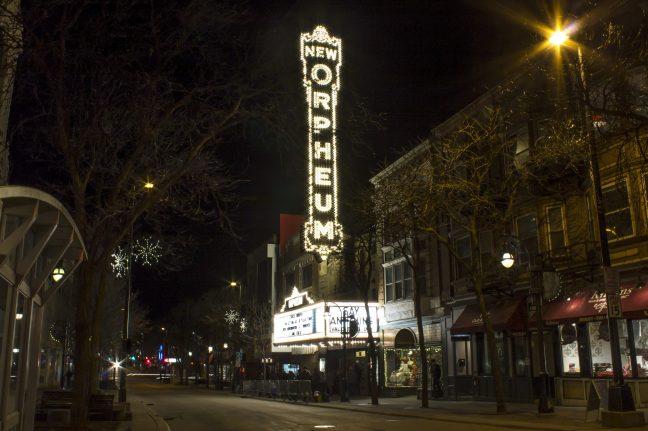When most UW students had a quite different type of night out in mind, a few others made the trek down State Street last Friday night to see the much-anticipated “End of the Moon” Laurie Anderson concert at the Wisconsin Union Theater. While costumed characters were busy transforming State Street into a surreal canvas of constantly morphing colors, shapes and voices (and trying to avoid the ones dressed up as police), faithful avant-garde music fans enjoyed an hour and a half of performance art Laurie Anderson-style: simply peerless poem-stories and innovative instrumentation.
Anderson was a pioneer of the “performance-art” genre, a multi-purpose, somewhat improvisational genre with roots arguably in the Happenings of the ’60s that encompasses pretty much anything that can be transplanted onto a stage, from spoken word and music or dance performance to eating breakfast. She is especially known for experimenting with technology in her work. Her ground-breaking 1982 hit “O Superman” that reached No. 2 on the more liberal British pop charts was a perfect example.
Judging from the ambitious film/visual endeavors that were part of her previous presentations, it was surprising to find the visual element was sparse and minimal. Votive candles scattered about the whole floor offered an otherworldly quality, as though it was not a floor, but rather a fire-lit sun or a flickering star. A small projection screen with a close-up photograph of the moon’s surface stood upstage right. The solo performance overall consisted of a series of loosely interwoven stories with electronic loop and neo-violin interludes.
Aside from an electronic switchboard, Anderson’s only instrument was this sort of neo-violin designed by Ned Steinberger: a wireless electronic instrument of a violin concept, too small and with too many cords on the back for a traditional violin, with a specially engineered device allowing her to hold it under her chin with one hand free to flip note cards. The violin itself is a very versatile solo instrument choice, lending itself to both melancholy and light-hearted moods, and especially to Anderson’s overall discordant cacophonous Stravinsky-esque atmosphere, with deep thrilling bass tones rattling through the chest (thanks also in part to the theater’s ghastly acoustics).
Anderson commented on a very broad range of themes, opening the show with a haunting, “Hello. Excuse me. Can you tell me where I am?” Appointed the first (and, according to one of her stories Friday evening, the last) artist-in-residence of NASA in 2002, several of her stories revolved around her experiences incorporating science with art and art with science. Struck by breathtaking photographs of “stars being born in outer space,” she said she asked the scientists how they got the idea to use those particular bright colors. “Well, we thought people would like them,” they replied. She went on to point out the limitations of the photograph — for example, the paradox that these “thermal photographs” which represent temperature, perceived by the sense of touch, appeal only to our visual sense.
Toward the middle of the performance, she discussed gravity as an illusion, a result of the geometry of the space-time continuum, while carrying a small pencil-shaped camera projecting her face upside down on the screen, and then placing the camera at the end of the violin bow as she played. The result was a disorienting but fascinating picture, a view of a place without gravity, where we could observe anything from any angle imaginable.
She later mused that perhaps all our worrisome theories on how the universe began are not quite so significant as how it would end, since we have no interest in where we came from at the end — “When you’re in a burning building, you don’t stop to ask, ‘I wonder who the architect of this building was.'”
She commented in several places on the United States’ shallow, half-thought-out response to other countries’ hostility toward our military actions, and of the constant awareness of the delicacy and precariousness of life post-Sept. 11. In one especially poignant story, Anderson describes a walk in the mountains of California with her terrier Lolabelle, who had her first experience being prey when she was attacked by turkey vultures. Though they quickly retreated after finding she was not a tiny white rabbit, Anderson describes the dog’s “brand-new expression” upon realizing that something or someone wanted to kill her, also resulting from the surprise that they could “come from the air, giving her a whole extra 180 degrees to be responsible for.” She compared Lolabelle’s reaction to that of her fellow New Yorkers after 9/11, each person with his eyes to the sky, realizing that he would be always vulnerable from now on.
She recognizes technological advancement as a two-edged sword. On the one hand, Anderson ushers in the changing face of music and performance art with technology applied aesthetically. On the other, the U.S. military ushers in weapons used to more precisely kill people, and corporations design gadgets making everyday activities quicker, easier, and increasingly devoid of thought with technology applied practically. At one point, she chillingly describes an exoskeleton-like spacesuit that could increase one’s arm strength by 40 times, and with built-in medical treatment devices such as “a splint for your arm in case the strength device malfunctions,” now being worked on by MIT and the U.S. Army. Scientific technology that saves us time and effort but will perhaps destroy us in the end makes a person feel the musician’s type of technology is perhaps the only type we should be trusted with.
The reception was tremendous, with a standing ovation in awestruck appreciation. The audience would have stood and applauded forever, the memory of her lingering apparition on stage, if the time would only have allowed, but obligations of the life outside the theater gradually pulled them, in rapt contemplation, out of the theater. No doubt more than one audience member, responding to the Halloween shouts of “So what are you, anyway?” was prepared to say: “I’m a Laurie Anderson groupie.”














